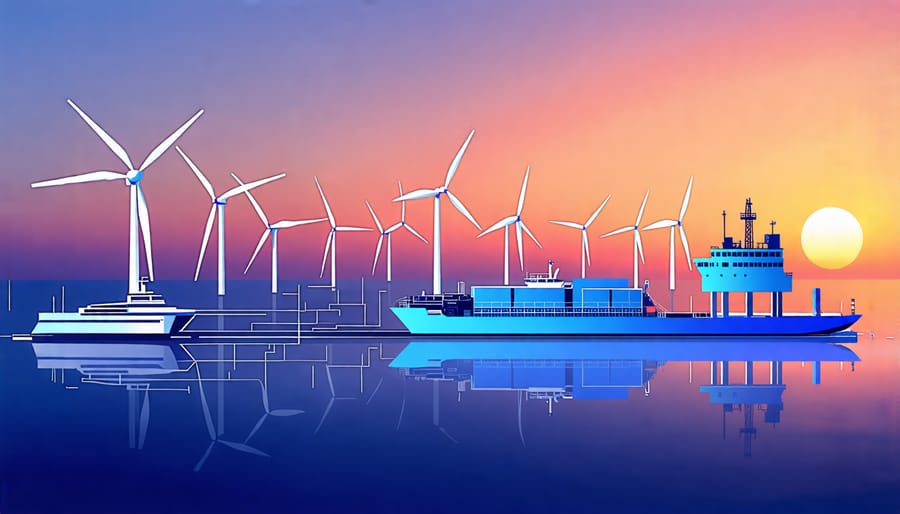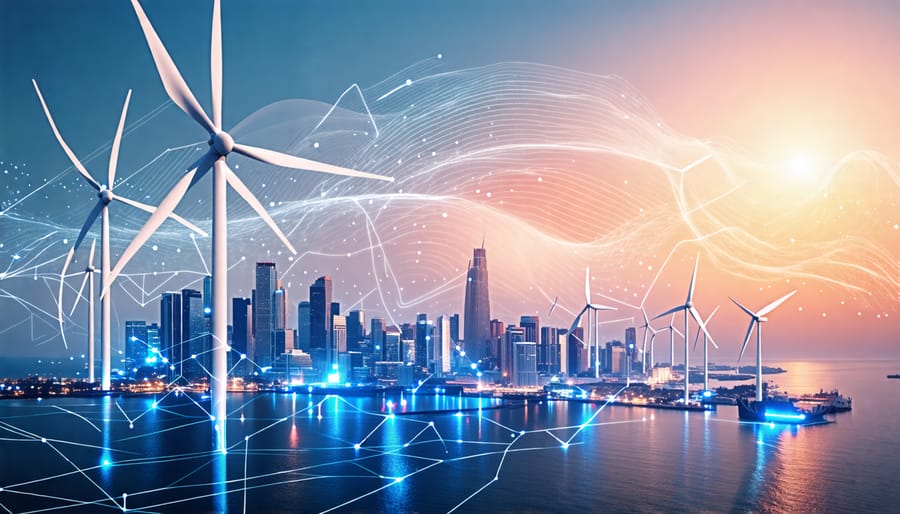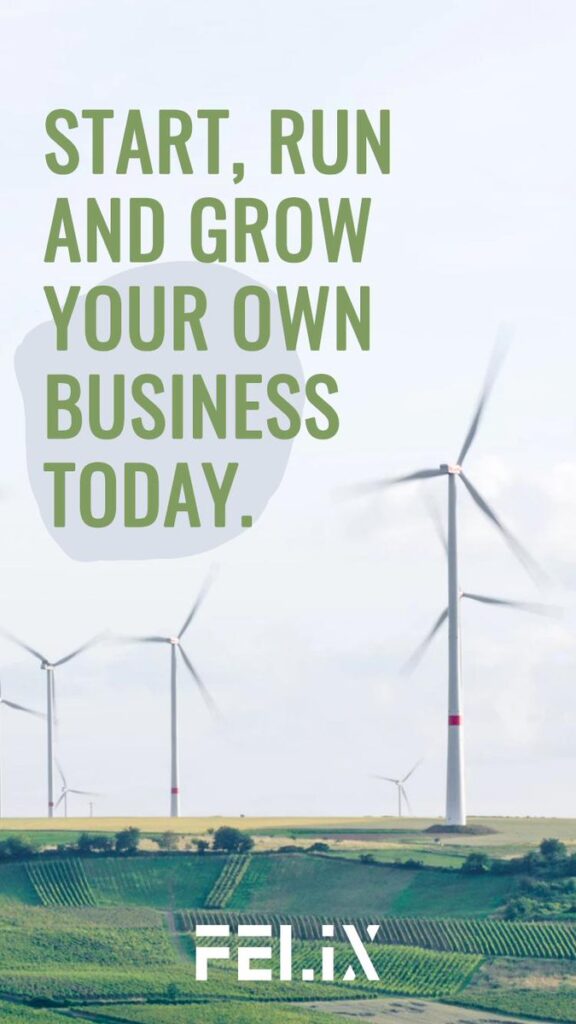Streamline the offshore wind supply chain by prioritizing local partnerships with component manufacturers to reduce lead times and costs. Strengthen logistics efficiency by adopting digital tracking systems that provide real-time insights on component transportation and inventory management. Enhance workforce training programs to ensure a skilled labor force capable of managing the complexities of offshore installations and maintenance. Foster collaboration with marine spatial planners to optimize site selection for offshore wind farms, ensuring minimal environmental impact and maximizing wind resource utilization.
Understanding Offshore Wind Supply Chains
Key Components
The offshore wind supply chain is a dynamic and intricate network, essential for transitioning to clean energy. At its core are the manufacturing processes, beginning with the production of critical components such as turbines, blades, and towers. Turbines are technological marvels, comprising thousands of precision-engineered parts. Blades are typically made from composite materials for the strength and flexibility required to harness wind efficiently.
Logistics play a significant role in the supply chain, ensuring safe transport from production facilities to offshore sites. This involves specialized vessels and infrastructure capable of handling oversized loads. As installation sites are often located far from shore, supply chain efficiency is paramount for timely project execution.
Installation includes a suite of activities—from seabed construction to the integration of turbines onto offshore platforms. This stage demands significant expertise, utilizing state-of-the-art vessels, cranes, and skilled labor to navigate complex maritime environments.
To illustrate this, the Hornsea Project in the North Sea stands as a testament to successful supply chain execution, becoming one of the world’s largest operational wind farms. Such projects underscore the offshore wind sector’s potential to provide sustainable energy solutions through collaboration and innovation. In light of these elements, the future of offshore wind is both promising and vital to achieving global renewable energy goals.

Challenges Faced
The offshore wind supply chain faces distinctive challenges, primarily revolving around logistics and technology. Logistically, the process begins with transporting enormous turbine components from the manufacturing site to the offshore location, often hundreds of miles away. These components, such as blades stretching over 100 meters, require specialized ships and equipment, demanding meticulous planning and coordination. The unpredictable nature of maritime weather adds another layer of complexity, potentially delaying transportation and increasing costs.
Technologically, constructing and maintaining offshore wind farms demand equipment and expertise capable of withstanding harsh marine conditions. Operations at sea are frequently hindered by rough waters, impacting maintenance schedules and prolonging downtime. Additionally, the lack of established infrastructure in many coastal regions poses significant hurdles. For instance, a recent case highlighted challenges faced by a project off the northeast coast of the United States, where logistical bottlenecks delayed the construction timeline.
Despite these barriers, innovative solutions are emerging. Improved vessel designs and advanced robotic systems are being deployed to enhance efficiency. Collaborative efforts among governments, industries, and researchers are also pushing the boundaries, striving to streamline supply chains and make offshore wind a cornerstone of sustainable energy.
Case Studies of Successful Implementations
The North Sea Project
The North Sea Project stands as a beacon of successful supply chain management in the offshore wind industry. Spanning one of the world’s most ambitious renewable energy landscapes, the project illustrates a meticulously coordinated effort to harness wind energy effectively and sustainably. A key factor in its success was the strategic collaboration between stakeholders, including industry leaders, governments, and local communities. By prioritizing transparent communication and shared goals, the project managed not only to align diverse interests but also to accelerate decision-making processes crucial for timely implementation.
At the heart of the project was a robust logistics network that optimized the movement of equipment and personnel. Offshore wind farms necessitate the transportation of massive turbine components, often across challenging marine environments. By leveraging cutting-edge transportation technologies and predictive analytics, the North Sea Project succeeded in minimizing delays and maximizing efficiency. This approach not only reduced costs but also limited environmental impact, a core objective given its renewable nature.
Moreover, the project invested heavily in workforce development, ensuring that local talent was equipped with the necessary skills through targeted training programs. This investment in human capital not only supported the project’s immediate needs but also strengthened the region’s long-term capacity to sustain and expand its renewable energy initiatives.
In summary, the North Sea Project exemplifies how deliberate planning, strategic partnerships, and a commitment to sustainability can effectively address the complexities of the offshore wind supply chain, offering valuable lessons for future endeavors in renewable energy.

Asia-Pacific Innovations
In the Asia-Pacific region, offshore wind supply chains are witnessing remarkable innovations aimed at enhancing efficiency and sustainability. Leading the charge is Taiwan, which has implemented a groundbreaking strategy by integrating digital twin technology into its wind farm operations. This advanced simulation technology allows operators to create virtual replicas of physical assets, enabling real-time monitoring and predictive maintenance. As a result, these efforts have significantly reduced downtime and optimized the supply chain processes.
Meanwhile, Japan is pioneering the use of artificial intelligence to streamline logistics and inventory management. By deploying AI-powered systems, Japanese companies can accurately forecast demand and optimize resource allocation, effectively minimizing waste and ensuring seamless operations. This smart approach not only enhances efficiency but also ensures the timely construction and maintenance of offshore wind projects.
Australia is setting an example through its commitment to localizing the supply chain. By fostering partnerships between international developers and local manufacturers, Australia is driving the development of a strong domestic industry. This strategy not only bolsters the economy by creating jobs but also reduces reliance on complex international supply chains, resulting in faster project timelines and reduced overall costs.
These innovations from the Asia-Pacific region demonstrate a forward-thinking approach to tackling the challenges of offshore wind supply chains, bringing renewed optimism for a sustainable energy future.
Impact on Environmental Sustainability

Carbon Reduction
Harnessing the potential of offshore wind projects offers significant environmental benefits, primarily through substantial carbon reduction. By generating clean electricity, offshore wind farms help reduce reliance on fossil fuels, which are major contributors to greenhouse gas emissions. These projects not only have the potential to power millions of homes but also play a critical role in mitigating climate change. One of the foremost benefits of wind energy is its ability to drastically diminish carbon footprints by offsetting coal or natural gas-fired power plants. Consider the case of the Horns Rev 3 wind farm in Denmark, which annually prevents over 1.5 million tons of CO2 emissions. The transition to wind energy signifies more than just an alternative energy source; it is a vital step towards a sustainable future. With each turbine that transforms wind into electricity, a cumulative positive impact on our environment is achieved, paving the way for cleaner air and a healthier planet for generations to come.
Biodiversity Considerations
As the offshore wind industry grows, safeguarding marine biodiversity has become a fundamental aspect of the supply chain. Companies are innovating to minimize ecological impacts, integrating new practices to protect marine life. For instance, during the installation of turbines, measures like bubble curtains are employed to reduce underwater noise, which can disturb marine animals. Additionally, advancements in turbine design now consider the migratory patterns of birds and marine species, helping avoid critical habitats. A leading example is Ørsted, which collaborates with marine biologists to develop eco-friendly solutions, ensuring projects coexist with marine ecosystems. Moreover, real-time monitoring technologies are being implemented to detect and mitigate potential disturbances. These proactive strategies showcase the industry’s commitment to sustainable growth and reflect a broader trend towards eco-conscious operations. By prioritizing biodiversity, the offshore wind supply chain not only fosters renewable energy but also reinforces the delicate balance of our oceans’ ecosystems.
Future Trends in Offshore Wind Supply Chains
Technological Advances
The offshore wind supply chain is on the brink of transformation, thanks to several forthcoming technologies poised to revolutionize the industry. Among the latest innovations, digital twin technology stands out. This advanced simulation tool allows operators to create digital replicas of physical wind farms, enabling real-time monitoring and predictive maintenance strategies. By anticipating equipment failures before they occur, downtime can be minimized, ensuring a continuous supply of renewable energy.
In addition, the use of artificial intelligence (AI) and machine learning algorithms is becoming increasingly prominent. These technologies optimize supply chain logistics, helping to streamline everything from component manufacturing to delivery and assembly at sea. As a result, we can expect a reduction in costs and improvements in efficiency, which will further enhance the competitiveness of offshore wind energy.
Furthermore, advancements in floating turbine technology promise to extend the potential of offshore wind farms into deeper waters, beyond the limitations of fixed-bottom structures. This expands the geographical possibilities for wind farms, tapping into stronger and more consistent wind resources, leading to higher energy yields.
Lastly, innovations in recyclable materials for turbine blades aim to address sustainability challenges, creating a circular economy within the industry. By leveraging these technologies, the offshore wind supply chain is not just advancing in efficiency but also aligning with broader environmental objectives, providing hope for a sustainable energy future.
Global Market Shifts
As the push for renewable energy intensifies worldwide, the offshore wind supply chain is poised for transformative shifts in the global market landscape. Increasing demand for sustainable power solutions is prompting governments and businesses to invest significantly in offshore wind infrastructure. This shift is creating a ripple effect across the supply chain, from manufacturing to distribution.
Emerging markets in Asia and South America are actively expanding their offshore wind capacity, driven by favorable geography and supportive policies. For instance, Taiwan has set ambitious targets, boosting domestic supply chain capabilities and attracting international players. Similarly, Brazil’s coastline presents vast potential for offshore wind farms, spurring interest from global manufacturers seeking to establish local partnerships.
These developments are coupled with technological advancements aiming to enhance efficiency and reduce costs. Innovations like floating wind turbines are making previously inaccessible areas viable for energy production, diversifying supply sources and reducing dependency on traditional energy systems.
Interviews with industry experts reveal that collaboration is key. Companies are forming alliances to share technological insights and optimize resource allocation, emphasizing sustainable practices. This collaborative approach not only accelerates the growth of offshore wind projects but also ensures economic benefits reach local communities, fostering job creation and skill development.
As the global market adapts, the offshore wind supply chain continues to navigate complex challenges, yet remains a beacon of positive change in the quest for a greener planet.
Conclusion
As we conclude our exploration of offshore wind supply chains, it becomes clear that the optimization of this complex process is crucial for a sustainable future. The integration of advanced technologies and innovative logistics strategies can significantly enhance efficiency, reduce costs, and minimize environmental impacts. As highlighted in various case studies, from Europe to Asia, streamlined transportation and local manufacturing are pivotal in overcoming logistical challenges. Similarly, insights from industry experts emphasize the importance of collaboration across sectors to address issues like resource limitations and regulatory hurdles.
Offshore wind energy is not just a technical endeavor but a critical pillar in the global transition to renewable energy. By refining supply chain strategies, we can ensure that offshore wind projects not only contribute to reducing carbon emissions but also stimulate economic growth in coastal regions. Ultimately, the path to a sustainable energy landscape relies on our commitment to fostering innovation, investing in infrastructure, and nurturing international cooperation. Every stakeholder, from educators to policy-makers, has a role in shaping this renewable energy frontier, making it an exciting and promising journey for creating a cleaner and more resilient planet.





